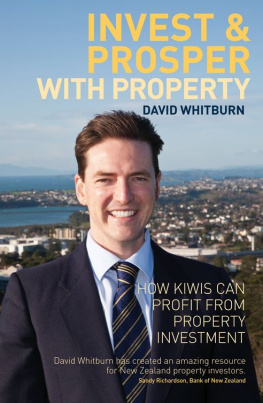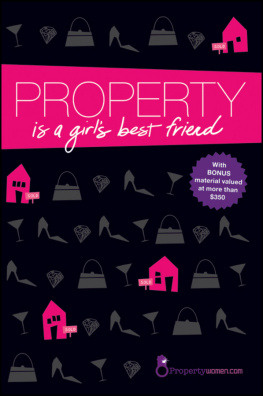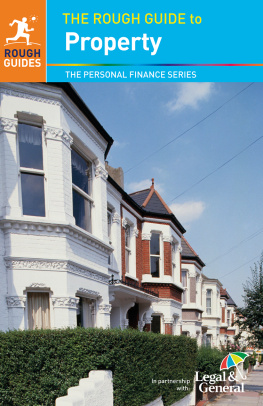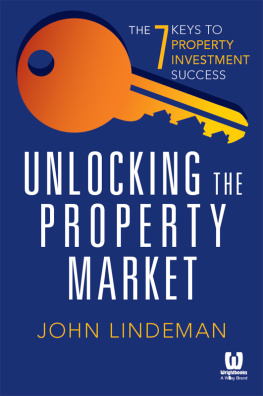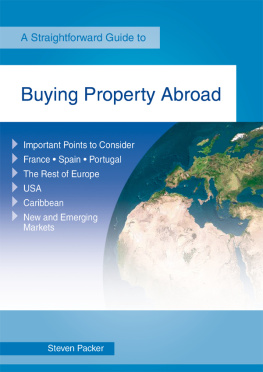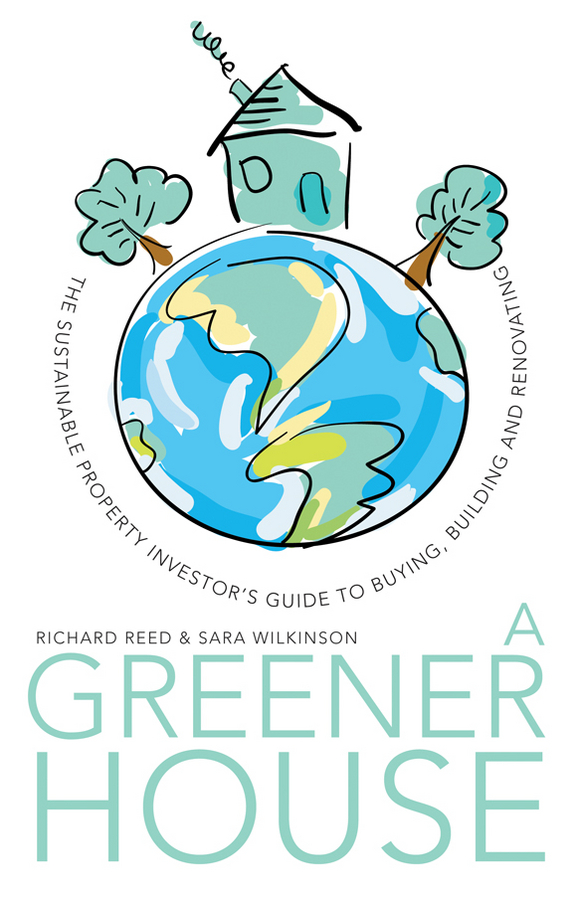Contents

First published 2008 by John Wiley & Sons Australia, Ltd
42 McDougall Street, Milton Qld 4064
Office also in Melbourne
Richard Reed and Sara Wilkinson 2008
The moral rights of the authors have been asserted
National Library of Australia Cataloguing-in-Publication entry:
Reed, Richard.
A greener house : the sustainable investors guide to buying, building and renovating / authors, Richard Reed; Sara Wilkinson.
Richmond, Vic. : John Wiley & Sons, 2008.
9780731407897 (pbk.).
Includes index.
House buying.
Housing Environmental aspects.
Real estate investment.
Sustainable development.
Wilkinson, Sara.
643.12
All rights reserved. Except as permitted under the Australian Copyright Act 1968 (for example, a fair dealing for the purposes of study, research, criticism or review), no part of this book may be reproduced, stored in a retrieval system, communicated or transmitted in any form or by any means without prior written permission. All inquiries should be made to the publisher at the address above.
Cover by Brad Maxwell
Cover and internal images iStockphoto/Elena Kalistratova
Disclaimer
The material in this publication is of the nature of general comment only, and neither purports nor intends to be advice. Readers should not act on the basis of any matter in this publication without considering (and if appropriate taking) professional advice with due regard to their own particular circumstances. The authors and publisher expressly disclaim all and any liability to any person, whether a purchaser of this publication or not, in respect of anything and of the consequences of anything done or omitted to be done by any such person in reliance, whether in whole or part, upon the whole or any part of the contents of this publication.
About the authors
Richard Reed
Over many years Richard Reed has gained hands on experience and knowledge about residential property and real estate. He has a background as a real estate valuer, and has been employed in both private and government firms with the focus placed on residential properties. His higher education was focused specifically on the property discipline, and included a PhD in residential property markets at the University of Queensland.
Richard is a member of the Australian Property Institute, and recently edited their text The Valuation of Real Estate . He is coeditor of The Australian and New Zealand Property Journal , and editor of the UK journal The International Journal of Housing Markets and Analysis . In addition, Richard is a member of the Royal Institution of Chartered Surveyors (RICS) and other Australian and overseas property associations, and has been widely published in the areas of property and sustainability. Currently he is Professor of Property and Real Estate at Deakin University (Melbourne).
Sara J Wilkinson
Sara Wilkinson has been working in the renovation and refurbishment of buildings, both residential and commercial, for over 24 years. She first came across sustainability or environmental issues in 1988 and has been active in this area ever since. Sara qualified professionally in 1987 as a chartered building surveyor and is now a fellow of the Royal Institution of Chartered Surveyors, a professional body with over 140 000 members covering land, property and construction.
Sara has been teaching sustainable building practices since 1992 in the UK and Australia. She has completed numerous research projects on the topic of building sustainability and has published her work in professional and academic journals, as well as presenting her findings at conferences around the world. Sara has lectured for many years on sustainability at the University of Melbourne, and is now lecturing at Deakin University (Melbourne) on sustainable construction. She has undertaken sustainable renovations on her own home, and was delighted when she sold her property and realised a 300 per cent increase in value over a four-year period.
Acknowledgements
This book is a result of many years of research into sustainability and value. The authors would like to acknowledge the many people, too numerous to mention individually, including property practitioners, developers, valuers and academics from all over the world, with whom they have spoken about the issues covered in this book. Their knowledge and work has provided an invaluable contribution to the philosophy and contents of this book.
Introduction
In a relatively short period of time, sustainability has become increasingly important to practically all members of Western society. This is evident in the media, and it can be commonly observed in our day-to-day lives. Few people would argue today that climate change is a myth, since we are given regular reminders of unusual climate and weather, including long-term droughts, floods, tsunami, rising sea levels and inexplicable weather patterns. We are constantly reminded about the importance of actively pursuing a sustainable lifestyle and leaving something for tomorrows generation.
There are many different ways to live a sustainable existence. One extreme is to become 100 per cent self-sufficient and contribute nothing harmful to the environment. At the other end of the sustainability scale, there are people who believe that simply using an energy efficient light bulb is adequate. In all reality, it isnt feasible for everyone to adopt a 100 per cent self-sufficient lifestyle, but it is obvious that we do need to take more action than just replacing our tungsten light bulbs, if we want to make a significant positive impact on the environment.
The climate is changing
All buildings consume energy for lighting, heating, cooling, cooking, washing and so on. Usually this is in the form of electricity, which is not actually an energy source in itself, it is merely a medium for transporting energy conveniently to the point of use (our homes). The problem is that in Australia, most of our electricity is produced by burning fossil fuels such as coal and gas. These fossil fuels contain carbon, which is released into the atmosphere as the fuel is burned.
Carbon is one of the greenhouse gases that are trapping more of the suns heat in the atmosphere, thus warming the planet. This is known as the greenhouse effect, and leads to global warming. Global warming is leading to irreversible climate change. Scientists all over the world agree that climate change is underway, and that in order to slow it down (not stop it they think it is too late for that!), we must make some big changes, especially when it comes to emitting carbon into the atmosphere. Some areas are higher offenders than others; regrettably, Victorians are the largest per capita emitters of carbon dioxide in the world. This is because of the high carbon content of the brown coal used in Victoria, and the amount of electricity Victorians consume. Scientists believe we need to find a new source of energy (importantly, not a non-renewable fossil fuel) in order to reduce carbon and greenhouse gas emissions and thereby slow down climate change.
There are many differing estimates of the impacts of climate change, from increased flooding, rising sea levels, displaced populations and mass migration of peoples, increased temperatures, increased desertification, increased rainfall and so on. The list is almost endless. What is clear is that the planet will not be anything like it is now by the end of the 21st century. It is this generation that needs to do something about this enormous problem.




